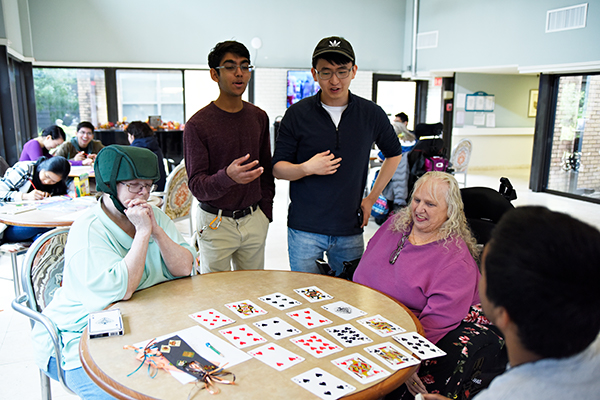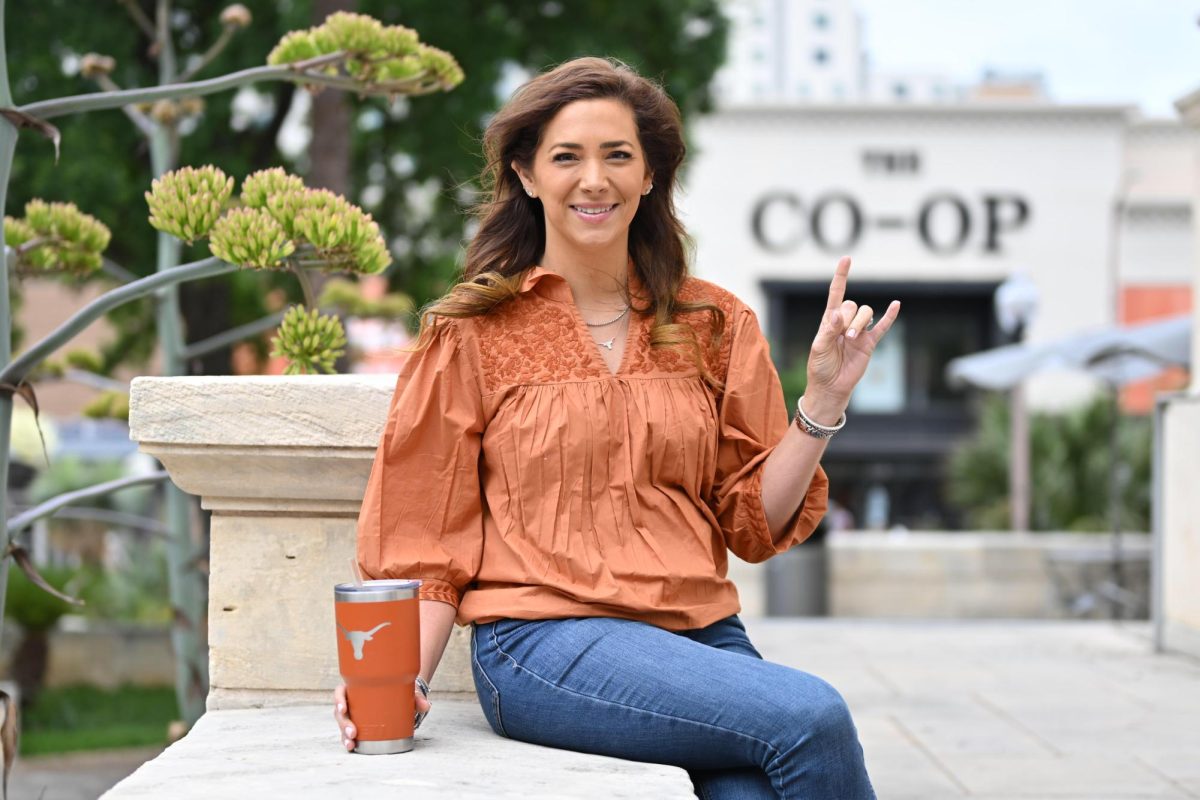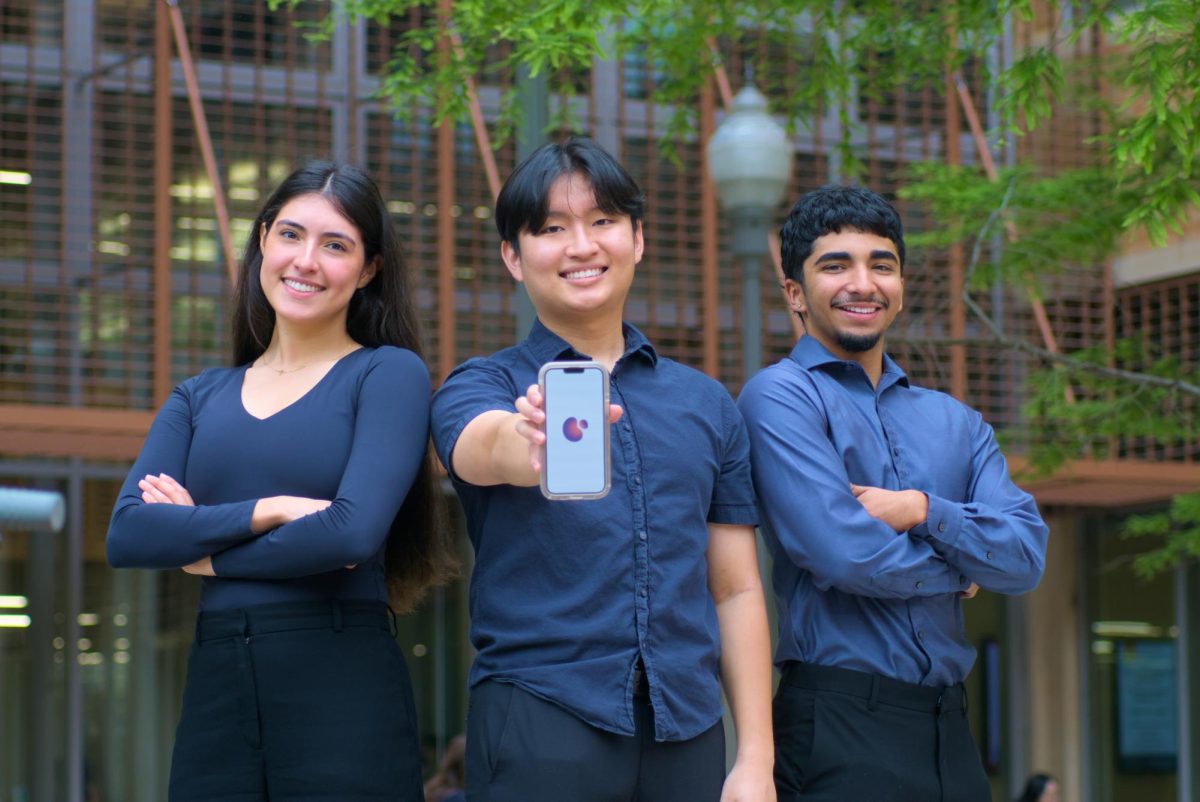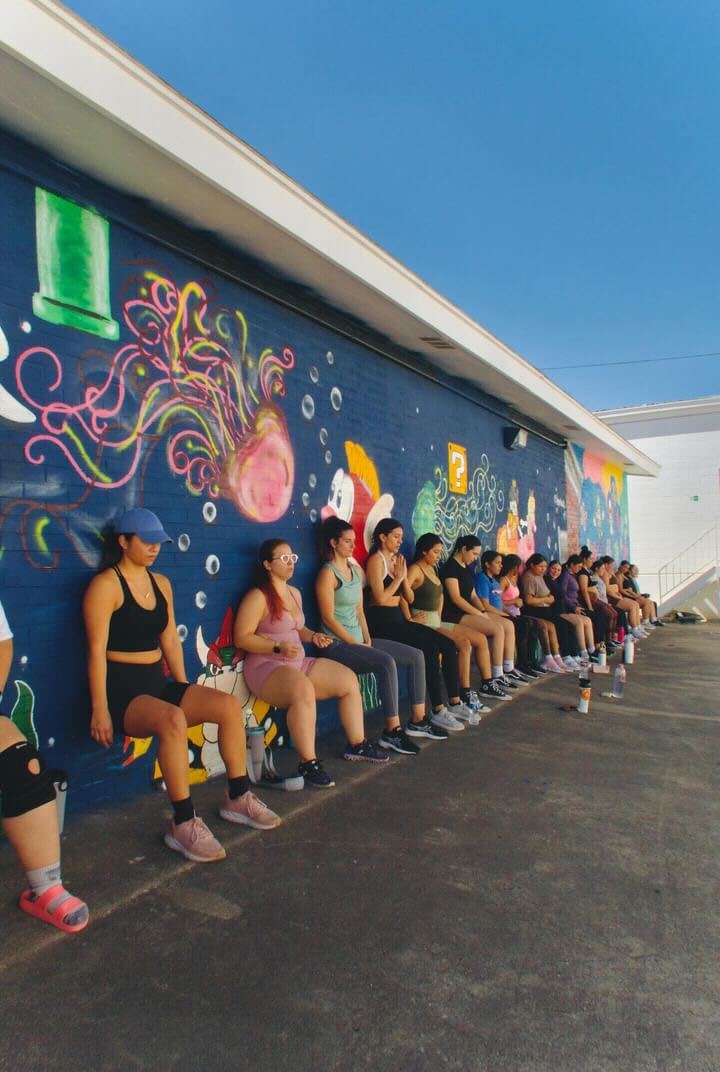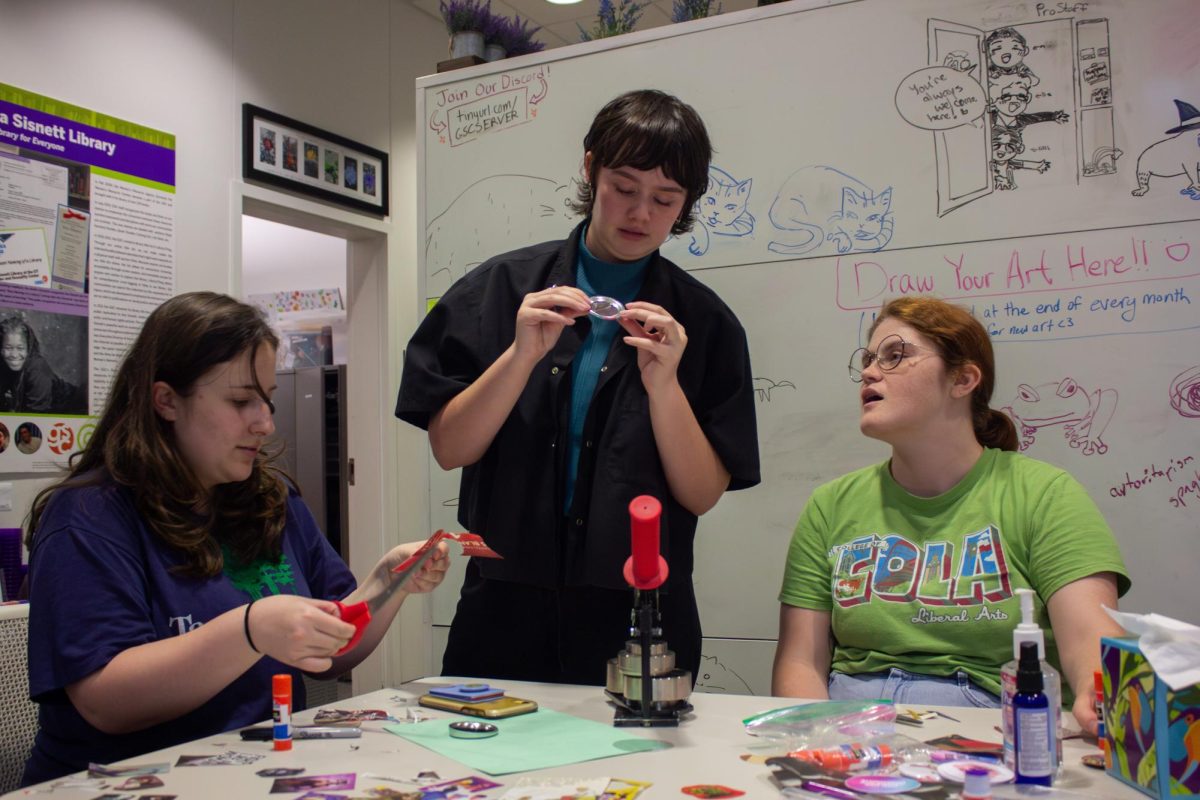Locked in a game of cards and holding their hands close to their chests, four people sit around a table in a recreation room. Two players are UT students, the other two are women in their 70s.
This is just another day in the life for members of student organization Bridging Texas, whose mission is to foster relationships between students and residents of assisted care facilities. Biology senior Kyungseok Jung started the organization in spring 2019.
“With the residents who can communicate their ideas effectively, they always come up to us afterwards and tell us ‘We’re so happy you guys are here,’” Jung said. “It really does make a difference.”
Every week, around 15 students drive to the Austin Retirement and Nursing Center. There, seniors and students challenge each other to games of dominoes or Go Fish, color in small groups or sit in front of the TV to cheer on the Longhorns. It’s a bustling hour and a half of socializing and connecting, bridging the intergenerational divide.
The idea for the organization came to Jung in 2017, when he was working as a certified nursing assistant at a facility in Round Rock. He said he realized how little social overlap there is between college-aged students and seniors, and he thought about the impact a small portion of volunteer time could have.
“At one point it really struck me that there are a lot of seniors who, once they get into these facilities, they’re not going to leave for the rest of their lives,” Jung said. “Us coming here, they experience a lot of interaction they wouldn’t get otherwise, and I think that really does leave a significant mark mentally and socially.”
Jason Ryder, volunteer coordinator for the center, said there is significant value in providing care for the mind. He identified the three ‘plagues of the elderly’ as loneliness, helplessness and boredom.
“A lot of times in a skilled nursing facility, what happen is all the attention is placed on (residents’) clinical needs,” Ryder said. “So when you’re involved in an activity, you’re no longer really thinking about your pain or if you’re lonely, depressed or bored.”
Richard Chen, an electrical engineering junior and technology coordinator for Bridging Texas, said the first time he came to the center, he walked around helping residents take pictures on their phones.
“It’s incredibly easy to start talking with them,” Chen said. “Especially if you ask them about the pictures on their phones. They love to show you pictures of their families, and they love sharing.”
Volunteers are important because nursing homes in Texas don’t have substantial budgets, especially when they’re funded by Medicaid and Medicare, activities director Hannah Walker said.
“The time (volunteers spend) here is important to the residents because it feels like somebody is coming in and they’re not getting paid to do it,” Walker said. “They’re doing it because they want to.”
It’s important to understand the lasting impact that merely committing to visiting one day a week can have, Ryder said.
“Let’s say hypothetically you were coming here on a Thursday afternoon after your classes are done,” Ryder said. “Then Monday, Tuesday, Wednesday it gives them something to look forward to.”



